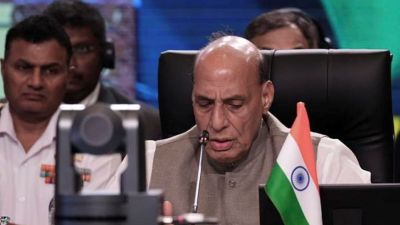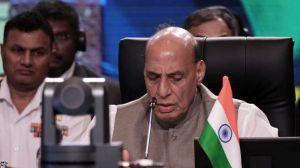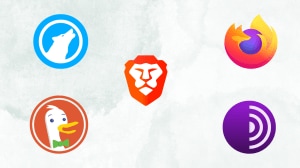The move might improve the earnings of cab drivers. It can, however, also disrupt India’s saturated ride-hailing market, in which companies have found the space to innovate and differentiate their business models to gain a competitive edge. Be it the fare settlement mechanism or the booking process, companies like Uber, Ola, BluSmart, and inDrive offer similar services in significantly different ways.

The order issued by Karnataka’s transport department will require ride-hailing companies to rework their business models in the state and search for new ways to remain competitive.
What does the transport department’s order say?
Story continues below this ad
The transport department’s order, which was effective immediately, specifies minimum fares based on three slabs of vehicle costs. The first slab includes all vehicles costing up to Rs 10 lakh, for which the minimum fare is fixed at Rs 100 for up to 4 kilometres and Rs 24 for each subsequent kilometre. The second slab includes all vehicles costing between Rs 10 lakh and Rs 15 lakh, for which the minimum fare up to 4 kilometres is Rs 115 and an additional Rs 28 for each subsequent kilometre. The third slab includes all vehicles costing over Rs 15 lakh, for which the initial 4 kilometres will cost a minimum of Rs 130 and an additional Rs 32 for each subsequent kilometre.
Notably, the order makes no distinction between different types of vehicles, be it sedans or SUVs, nor does it consider the availability of features like air-conditioning. Moreover, the order allows for the charging of fares only on the basis of distance travelled and not time taken. Charging fares only on the basis of distance travelled implies that surge pricing, which involves the hiking of fares during peak hours, is also not allowed. The order does allow for a 10% surcharge on trips between midnight to 6 am.
How will the order impact Uber, Ola, and BluSmart?
Uber and Ola together command a majority of India’s ride-hailing market. Both companies offer an upfront fare which consists of the base rate, rates for estimated time and distance of the route, and the current demand for rides in the area. The third component is determined by an algorithm which automatically increases the trip cost based on the demand for rides in the user’s locality. Once the user selects the vehicle and the corresponding upfront fare, the app connects them to a nearby driver.
The order will fundamentally alter Uber’s and Ola’s price settlement mechanism as it disallows surge pricing and price determination on the basis of time taken. Fares for Uber and Ola are also dependent upon vehicle type and not vehicle cost, as mandated by the order. It is not clear yet how the two companies plan to alter their business models to adhere to the order.
Story continues below this ad
Unlike Uber and Ola, the ride fares of BluSmart, which offers rides on battery-run vehicles, are not sensitive to fluctuations in demand. BluSmart, which currently operates only in Delhi-NCR and Bengaluru, has fixed rates for specified distance slabs.
For its Delhi market, BluSmart additionally applies a distinction between relaxed and rush hours. Thus, a BluSmart cab for a 6-km ride during rush hours in Delhi costs Rs 199, but only Rs 149 during relaxed hours.
For city rides up to 6 km in Bengaluru, BluSmart charges a flat rate of Rs 199. For rides between 6 and 9 km, it charges Rs 249, and so on. For airport rides and rentals, BluSmart follows the same system, albeit with different rates.
As per the order, the minimum fare for a 6 km ride in a car costing between Rs 10 lakh and Rs 15 lakh would be Rs 171. Still, among the major ride-hailing companies, BluSmart is likely to be the least affected by the order: it has no surge pricing, and it already only considers the distance travelled.
Story continues below this ad
How will the order impact inDrive?
inDrive’s ride-hailing model diverges significantly from Uber, Ola, and BluSmart as there is no predetermined trip fare thrust upon the passenger and the driver. Instead, inDrive only recommends a base fare which is subject to in-app negotiation between passengers and drivers so that they can decide upon a mutually agreed fare. The recommended fare takes into account the normal cost per kilometre, the normal cost per minute, and the cost of the driver coming to the pick-up location.
Unlike Uber and Ola, the recommended fare does not include any algorithm-based surge charge. “We do not engage in price manipulation– the price is decided by the passenger and the driver. If a ride is booked during peak hours, the drivers themselves can increase the price,” said Danila Konstantinov, in-Drive’s senior business development manager in South Asia.
Once the passenger types in where they want to go, inDrive then displays the recommended fare which the passenger can either increase or decrease. After the passenger decides what fare they want to pay for the trip, drivers nearby will be notified and can either accept the fare proposed by the passenger or propose a new fare. In the case of the latter, passengers will be shown what fare individual drivers wish to receive for the ride and can accept or decline based on their preference. The ride is confirmed only when both the passenger and the driver agree to a negotiated price.
Story continues below this ad
The order requires inDrive’s base fare to match the minimum fares prescribed by it. While it does not impose any restrictions on additional negotiations between the rider and the driver, a higher fixed base price might make trips with inDrive more expensive.
“In our experience, fixed rates don’t necessarily lead to increased ride opportunities for drivers or improved vehicle availability for passengers,” cautioned Arijit Das, inDrive India’s public policy head.
“Platforms like inDrive advocate for decentralisation, empowering both consumers and drivers to collaboratively determine prices. It’s crucial for the government to reconsider such a shift, recognising its potential impact not only on the overall business landscape but also on consumer welfare,” Das added.
Will the order improve drivers’ earnings?
Story continues below this ad
The order does not specify commission rates for ride-hailing companies. Currently, Uber and Ola can charge up to 30% of the ride fare as commission, whereas inDrive charges a much lower 10%. BluSmart’s drivers are paid on a weekly basis and their earnings are linked to the business they do on the platform. If the commission rates stay at these levels, higher minimum fares set by the order can improve drivers’ earnings.
As per Fairwork India Ratings 2023, all three participating ride-hailing companies, namely Uber, Ola, and BluSmart, scored zero out of two points in the “Fair Pay” criteria. “Desk research and our interview with Ola and Uber workers often reported high costs and a resultant low income, a lack of clarity around commissions and rates, a general lack of awareness about the terms and conditions that govern their relationship with these platforms, poor grievance redressal channels, and no recognition of collective bodies, among other things,” a researcher at the Fairwork India team told The Indian Express.








































